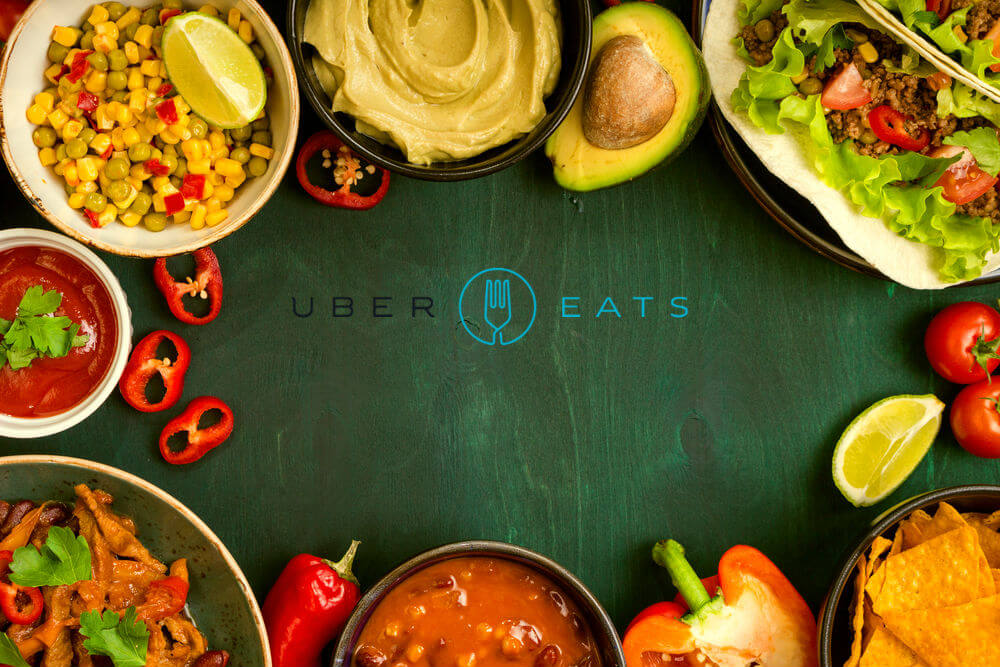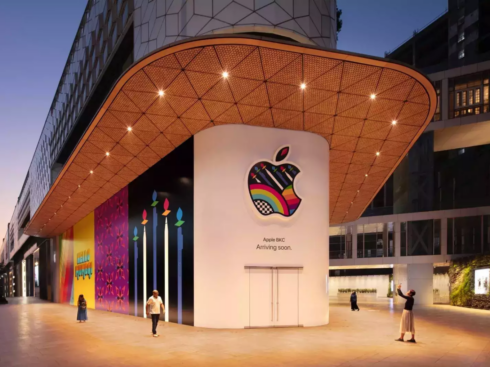
With the Indian ecommerce segment already battling fierce competition from foreign players, the next hot space on the global radar is Indian foodtech. Just last week, Google entered the hyperlocal vertical with Areo. Not to be outdone, Uber has announced the launch of its food delivery app UberEATS in the second quarter of 2017, as per ET.
The services will initially be launched in six cities – Bengaluru, Hyderabad, Pune, Mumbai, Chennai and Gurugram – and will expanded further.
Uber first revealed its intentions to enter the Indian foodtech space in January 2017 via its blog. At that time, Allen Penn, Asia Pacific’s Head of UberEATS stated, “I am incredibly excited about bringing UberEATS to India. This is a significant investment, it spans multiple cities and regions, and it has the potential to change the food industry – with the push of a button – in one of the most vibrant food cultures in the world.”
At present, the company is busy creating its restaurant partner network at a commission rate of around 25%- 30%, along with the hiring of senior positions in the Indian UberEATS team. As reported, Manan Javeri will head the India Launch and report directly to Allen Penn. He joined Uber in 2015 and is a former McKinsey executive.
The (Not-So) Nascent Indian Food Services Market
The Indian food services market is touted to reach $78 Bn by 2018, growing at 16% YoY. Also, as per a TechSci Research report, the foodtech market in India is projected to grow at a CAGR of over 12% during 2016 – 2021.
Further, as per a RedSeer Consulting 2016 report, online food delivery partners contribute nearly 30%-35% business of restaurants, and together they garnered a GMV of $300 Mn in 2016. Moreover, as per IBEF March 2017 report, the organised food business in India is worth $48 Bn of which food delivery is valued at $15 Bn.
The data indicates a nascent, yet-to-ripen market – full of opportunities for both domestic and foreign players. However, of late, the scenario has been a bit different.
Early Years
In 2015, with the growth of players like Swiggy, Zomato, TinyOwl, foodpanda etc., the foodtech sector promised high demand, high returns, and profitable exits. In February 2016, homegrown unicorn Zomato became the first foodtech company to claim profitability by mid-2016 and to hit break-even in its biggest markets including India, UAE, and Indonesia.
However, by the end of 2016, the scenario had taken a turn for the dark – spammed with me too startups, resulting in evermore pivots, shutdowns and acquisitions.
Let’s have a look at some numbers first.
As per an earlier Inc42 report, for the period between January 2015 till June 2016, out of the 105 foodtech startups launched in India, only 58 were active. For the same period, the sector witnessed 37 shutdowns. A few of them operated for a couple of years, while rest wrapped up after six or eight months of operations. Besides, from 2015 till July 2016, nine were consolidated via the M&A route.
Another report by ET revealed that the estimated number of foodtech startups at peak in 2015 was 337, which fell down to 64 in 2016. Furthermore, as per a recent report by NRAI, more than 150 foodtech startups have shut shop in 2016. The media even referred to 2016 as the ‘graveyard’ for foodtech in India.
Some foodtech companies also resorted to scaling back operations to avoid the burn. Once on its way towards profitability, Zomato also was forced to scale back operations from seven countries trying to cover a loss of $492 Mn, for the financial year ending March 2016. Its nemesis Swiggy also bled profusely for the same period, as the company generated only $23.5 Mn revenue against $137 Mn losses. In March 2016 cab aggregator Ola too shut down the services of Ola Cafe, rolled out in April 2015.
Of all the cases, foodpanda’s position was the worst in India. Since its launch in 2012, the company raised over $318 Mn from global investors including Goldman Sachs, Rocket Internet, Falcon Capital, Phenomen Ventures, and iMENA Group. But the investment could not help the company to stay afloat. In 2015, it was forced to lay-off over 15% of its workforce and in September, reports also surfaced about the multiple flaws in the company’s order processes. By January 2016 it was searching for buyers at a valuation as low as $10 Mn – $15 Mn. As per a Mint report, in February 2016, foodpanda tried to change its strategy by adopting its own kitchen model and outsourcing delivery. Despite several attempts to raise fresh funds and improve upon its unit economics, the business was finally sold to Europe-based Delivery Hero in December 2016.
Funding Trend
While initially the innovation and new set of business models – like discovery, on-demand delivery, concierge, home cooked food, and kitchen cloud – attracted investors interest in the early-stage startups, later they shifted to more mature and revenue generating startups.
The state of funding was no different. As per Inc42 DataLabs research, the funding in foodtech reached $152.34 Mn in 2016, an approximate 57% fall from $353.5 Mn in 2015. However, the numbers are far more dismal in 2017 – with only seven deals done in Q1 2017, amounting to approximately $46 Mn. The amount is approx. 23% lower than Q1 2016, where around 17 deals happened with disclosed funding of ~$60 Mn.
Here is a table which showcases how the funding trend shifted from early 2016 to the first quarter of 2017 (till March 2017).
The State Of Homegrown Players V/s What Uber And Google Are Banking On
The online food delivery space in India has been dominated by players like Zomato, Swiggy along with a few entrants such as Yumist, Faasos and more. In 2016, alarms were raised for those who were left as well as for the new entrants. The biggies started focussing on revenues, the newbies began experimenting with new models including personal chefs, catering services, box-delivery, pop-up kitchen, on-demand-meals and on-demand-chefs and more.
Zomato has been aggressively working to reach the threshold level needed to monetise each of its operations. With a total of $223.8 Mn raised to date on back of its online delivery model, the company has recently entered the Cloud Kitchen space, plans for which were announced in November 2016. It later added further fuel to the fire by announcing aggressive growth plans, which were confirmed by roping in Morgan Stanley in a bid to raise fresh funds. Also, as Inc42 recently reported, Zomato revenues in 2016-17 rose 80% on yearly basis, reaching $49 Mn, on account of growth in advertisements and the food delivery business. Also, it witnessed an 81% drop in the annual operating burn for FY17 ending at $12 Mn, compared to the $64 Mn in FY16.
Swiggy, on the other hand, is in talks with South African Internet and media conglomerate Naspers for a possible fundraise at a valuation of about $400 Mn. Backed by marquee investors such as Accel India, SAIF Partners, and Norwest Venture Partners etc., Swiggy has raised around $75.5 Mn funding till date. The platform is currently functional in eight cities and has reportedly partnered with 9,000 restaurants. In January 2017, Swiggy also set up its cloud kitchen, ‘The Bowl Company,’ in Bengaluru.
While both these companies are fighting their wars on the back of multi-billion dollar war chests, there is another wing of startups cracking codes for complex business models. This includes the likes of Yumist, Faasos, Twigly, Innerchef, HolaChef, HelloCurry, Petoo among others.
As far as UberEATS is concerned, Uber began its pilot in Los Angeles in 2014 and is currently live in 62 cities globally as per ET. This includes Southeast Asian cities such as Bangkok, Singapore, Tokyo, Hong Kong and Taipei.
Uber is banking on the brand name it has made in the past few years over its cab aggregator business in the country. Although, as the ET report specified, it does lack access to the fleet of two-wheelers which is usually required in the food delivery business.
Google, on the other hand, made a smarter play here. The company has been testing the waters in both the hyperlocal and food delivery space, at the same time merging two hottest sectors – foodtech and home services. For instance, now one can order food from Faasos or FreshMenu or a plumber from UrbanClap together at one place via Areo.
Editor’s Note
As a country, India offers great demographics for any company – be it local or global. With over 50% of 1.2 Bn population (as per Wikipedia) comprising of youth, increasing disposable income, and rising Internet – the foodtech market is ready for another leap towards becoming a viable sector propelled with businesses working on sustainability. However, despite this high market opportunity, Indian consumer Internet companies are still struggling to generate revenues and become unit positive.
The question of winning the foodtech war then needs to be tackled on three fronts.
First, userbase versus trust and reliability. Established players such as Zomato, Swiggy and even smaller players have a userbase that trusts them whereas newer entrants UberEATS and Areo (which plays in the hyperlocal and food delivery space) may have massive userbase – their use case is still not tested. Then comes expenses. Being a cost-sensitive country, it can also be noted that one whoever makes the cut on cost-front (capex, opex) will win the war.
But then again, recent trends have also shown that the modern Indian consumer looks for quality as well as affordability.
In ecommerce, the entry of global titans Alibaba and Amazon has led to a tight race to conquer pole position in the space among the contenders – local and international. With UberEATS also making a play at Indian foodtech and Google’s Areo targeting both foodtech and hyperlocal, it remains to be seen how the lcal players in foodtech will handle the heat.


























